Biodiversity lexicon: I for Invasive species
Purple flowers, dark green leaves: at first glance, the dense borders of Indian balsam look attractive to golfers. However, the plant is actually an invasive species that also causes problems for golf courses. Invasive species are one of the biggest threats to biodiversity worldwide. Golf courses are also affected by this, as their extensive green areas and diverse habitats provide both refuges for native species and potential entry points for invasive species.
What are invasive species?
Invasive species are non-native plants, animals or microorganisms that enter new habitats through human intervention and can cause ecological, economic or health damage. They compete with native species for resources, change habitats and can destabilize entire ecosystems. This is why invasive species vary from country to country.
One prominent example is the Japanese beetle, whose larvae damage the roots of grasses and can therefore cause extensive damage to fairways and greens. Indian balsam(Impatiens glandulifera), which suppresses native plant species due to its rapid spread and high seed production, is now also massively present in Europe.
Removal of invasive species
Invasive species take over over time and have to be removed, which considerably increases the maintenance effort for golf courses. Additional costs are incurred for their removal and control. They can also affect the enjoyment of the game if, for example, damaged areas make it difficult to play or certain areas have to be closed off. One example is the raccoon, which now feels at home in the trees on golf courses and searches the fairways for larvae. In doing so, it tears up the turf and, like crows, leaves behind many damaged areas that make parts of golf courses unplayable.
What to do about invasive species?
An effective biodiversity strategy on golf courses should include the following measures:
- Early detection and monitoring: Your head greenkeeper should recognise invasive species. Regular checks help to identify invasive species at an early stage and prevent them from spreading.
- Mechanical removal: The manual uprooting or mowing of invasive plants can curb their spread. Activate members to pull out balsam on an evening, for example.
- Promoting native species: Planting native plant species strengthens the resilience of the ecosystem.
- Education and training: Employees and members should be informed about the problem and trained in detection and control measures. Include the topic in the newsletter.







